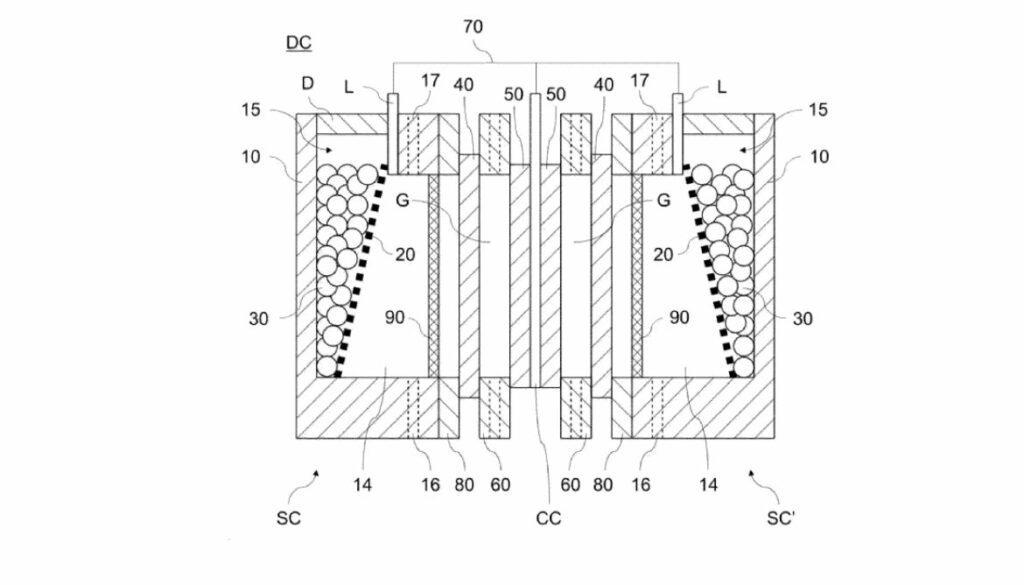Hyundai Motor Company filed an intriguing patent that describes a new kind of battery technology that could significantly impact energy storage and environmental management. This patent outlines the design and operation of a metal-aqueous battery integrated with a hydrogen generation and carbon dioxide storage system. The combination offers a multifaceted approach to modern energy challenges.
Anatomy of the Metal-Aqueous Battery
The centerpiece of this patent is the metal-aqueous battery, which is characterized by its unique double-cell structure. Each double cell comprises two single cells, each having its own anode, cathode, separator, and cathode spacer. One novel aspect of the design is the cathode spacer positioned between the separator and the cathode, precisely engineered to create a gap, which optimizes the function of the cell. In addition, the setup includes a current collector placed strategically between the two single cells so that the cathodes face each other across the current collector. This arrangement theoretically enhances the efficiency of the battery by optimizing the electrochemical processes involved.
Hydrogen Generation and Carbon Dioxide Storage
In addition to the design of the metal-aqueous battery, the patent further details a system for hydrogen generation and carbon dioxide storage. This dual function holds significant potential for sustainable energy solutions. The energy storage technology could effectively contribute to renewable energy applications by generating hydrogen, a clean energy source. Simultaneously, the system has the ability to store carbon dioxide, addressing one of the pressing environmental concerns of our time.
Potential Applications and Impact
While the patent’s actual effectiveness and scalability remain to be fully evaluated, its potential applications could be far-reaching. This technology might support sustainable transportation solutions, primarily if integrated into electric vehicles. The effective generation of hydrogen and storage of carbon dioxide could also contribute to reducing greenhouse gas emissions, marking a step forward in tackling climate change issues.
